What Does In Camera Mean
Despite ownership cameras which accept been specifically designed to take and make utilise of different lenses, a large number of photographers just ever employ the kit lens that their DSLR or interchangeable lens camera came with. But it's really not that surprising, picking the right side by side lens can be daunting, which is why we're going to try to help with our guide to life later the kit lens.
Lenses are arguably the most important office of your camera set-up, they brand or break your pictures. They control the image that'southward projected onto your imaging sensor, and ultimately what photos you lot are taking home. Every bit such, many photographers would prefer to shoot with an okay camera and a great lens, than a nifty camera with ho-hum glass fastened. But knowing the importance of practiced glass is one affair, it's another to know what lens volition give yous the artistic freedom to capture the photos you want to go.
To the uninitiated, lenses are inexplainable tubes of glass with numbers and confusing acronyms printed on the side. Hopefully, this guide will assist you understand which lenses tin be used to achieve what, why others can toll more than a family automobile … and how in that location are some sub $150 bargains which could change your photography forever.
Which lens should I buy adjacent?

If you currently merely accept the kit lens your photographic camera came with, the short answer to this question is that as soon as you have the cash available, you should go out and go a fast normal prime lens or a telephoto zoom. The longer and more than considered answer is that you need to think nearly the type of photographs you currently take. You need to sympathise how dissimilar lenses could better your current photos and allow you to take ones that you currently can't. If that all sounds a bit disruptive, read on.
Decoding the lens jargon

The almost sentence-long collection of letters and numbers on the side of a lens barrel can tell y'all all sorts of things virtually a lens. Merely the details which you lot should probably pay the most attention to are those which detail the focal length, maximum discontinuity, lens mount and format type.
Focal length
Focal length is expressed in mm and a higher number means a bigger zoom, while a lower number mean the lens can be used for wider shots. As a rough reference, the human heart is said to run into about the equivalent of 30-50 mm on a full frame camera (more on that afterwards). A number lower than xxx-50 mm volition take in a bigger view than you naturally come across, while higher numbers hateful focus will be on a smaller attribute of your view.

If the lens has a focal length range with ii numbers (say 24-eighty mm) this means it's a zoom lens and is capable of zooming and being used at any betoken across that range. However, if at that place is a single focal length number (50 mm for instance) it'due south a prime lens, so taking in more or less of the view will require you to get closer or farther away from your subject. Traditionally, primes have been considered to exist optically superior to zooms, because trade-offs have to be made when producing zoom lenses. But that's not to say that some zooms are not improve than some prime lenses.
To brand understanding focal length more difficult, the same focal length lens gives dissimilar views on cameras with various sensor sizes, because of the crop factor (the sensor only takes up function of the projected prototype). As a result, many manufactures give a 35 mm-format equivalent on lenses designed for cameras with smaller sensors and in this article descriptions are based on on 35 mm-format. Therefore, if your camera has a smaller sensor, and there'due south a expert chance it does, you'll need to consider this when deciding which lens you lot need.
If you're using a total frame camera in that location'south no calculation needed, a lens volition give you the field of view you'd expect from its number. If your photographic camera has an APS-C sensor (Nikon DX DSLRs, Sony NEX…) information technology has a ingather factor of one.5 - meaning you multiply the lens focal length by one.5 to get its equivalent 35 mm-format focal length. For Canon APS-C cameras that number is 1.half dozen, for Micro Four Thirds cameras it's 2.0 and for the Nikon 1 series information technology'southward 2.seven.
That means a 35 mm lens would give a field of view equivalent to 56 mm on an APS-C camera like a Canon 70D and equivalent to seventy mm on a Micro Four Thirds camera like the Olympus OM-D E-M1. On a Nikon 1 information technology would act like a 95 mm lens does on a full frame camera.
Maximum Discontinuity
Maximum Discontinuity is shown in a number of ways, but whether it's f/2.8 F2.8 or 1:two.8, it all ways the same affair and refers to the the maximum amount of light which the lens tin can assemble. Lenses with larger maximum apertures (slightly confusingly these are the ones with lower numbers) are capable of gathering more than low-cal.
As a F1.8 lens is able to use more light than an F4 lens, this means it could be used in lower-light situations without having to use a wink, and is capable of producing a shallower depth of field (the part of the epitome that is sharp) as shown beneath.
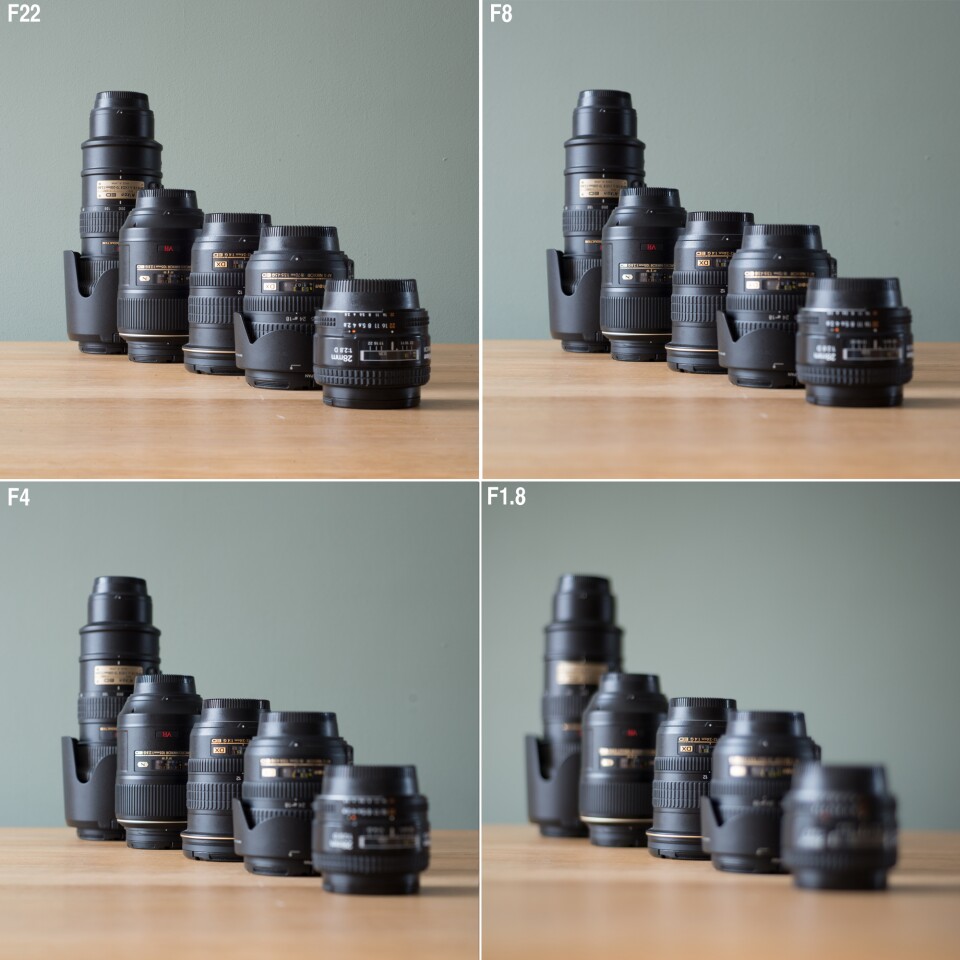
Some zoom lenses take a variable maximum aperture meaning that it changes depending on focal length. So, while a 18-200 mm F3.five-v.6 lens would take a maximum discontinuity of F3.v at 18 mm, it would be be F5.half-dozen by the time you zoomed to 200 mm.
Lens Mount
It goes without saying that yous want to buy a lens that will adhere on your camera, and this is known every bit the lens mount. Camera manufacturers by and large make lenses with proprietry mounts which will but fit their devices, sometimes having multiple lens mounts for different camera lines. The major exception to this is Micro Iv Thirds lenses which can be used on respective Olympus and Panasonic cameras. Third party manufacturers besides make lenses with mounts to fit various brands.
It'southward important to know which mount your camera uses before heading out to buy a lens. Example lens mounts for DSLRs include the Nikon F-mount, Canon's EF or EF-Due south, the Pentax Thou and Sony'due south Alpha (A) mount. For mirrorless interchangeable lens cameras, these are things similar the Catechism EF-Thou, Fujifilm XF, Nikon 1, Sony East, Samsung NX and Pentax Q. Every bit mentioned before, Olympus and Panasonic Micro Four Thirds cameras take whatever Micro Iv Thirds mount lenses.
Format
In improver to being able to mountain the lens on your camera, you need to be certain it volition produce an image big enough to cover the epitome sensor. Because unlike cameras use unlike size sensors, manufacturers produce specific lenses to piece of work with them.

For case, while Nikon DSLRs come with total frame or APS-C sensors - and both take F-mount lenses - its DX lenses just produce an prototype big plenty to comprehend the smaller of the two sensors. Meanwhile, FX lenses cover the full frame and can also exist used on DX and even Nikon i cameras (with an adapter). This is done because lenses designed for smaller sensors tin can be physically smaller and lighter themselves.
Different types of lens
Lenses are by and large categorized by their focal range or specific function if they're a specialist lens. Below we've taken a look at a few of the nigh common types of lens, idea about the characteristics their images are said to have, and considered how they can be used.
Ultra Wide
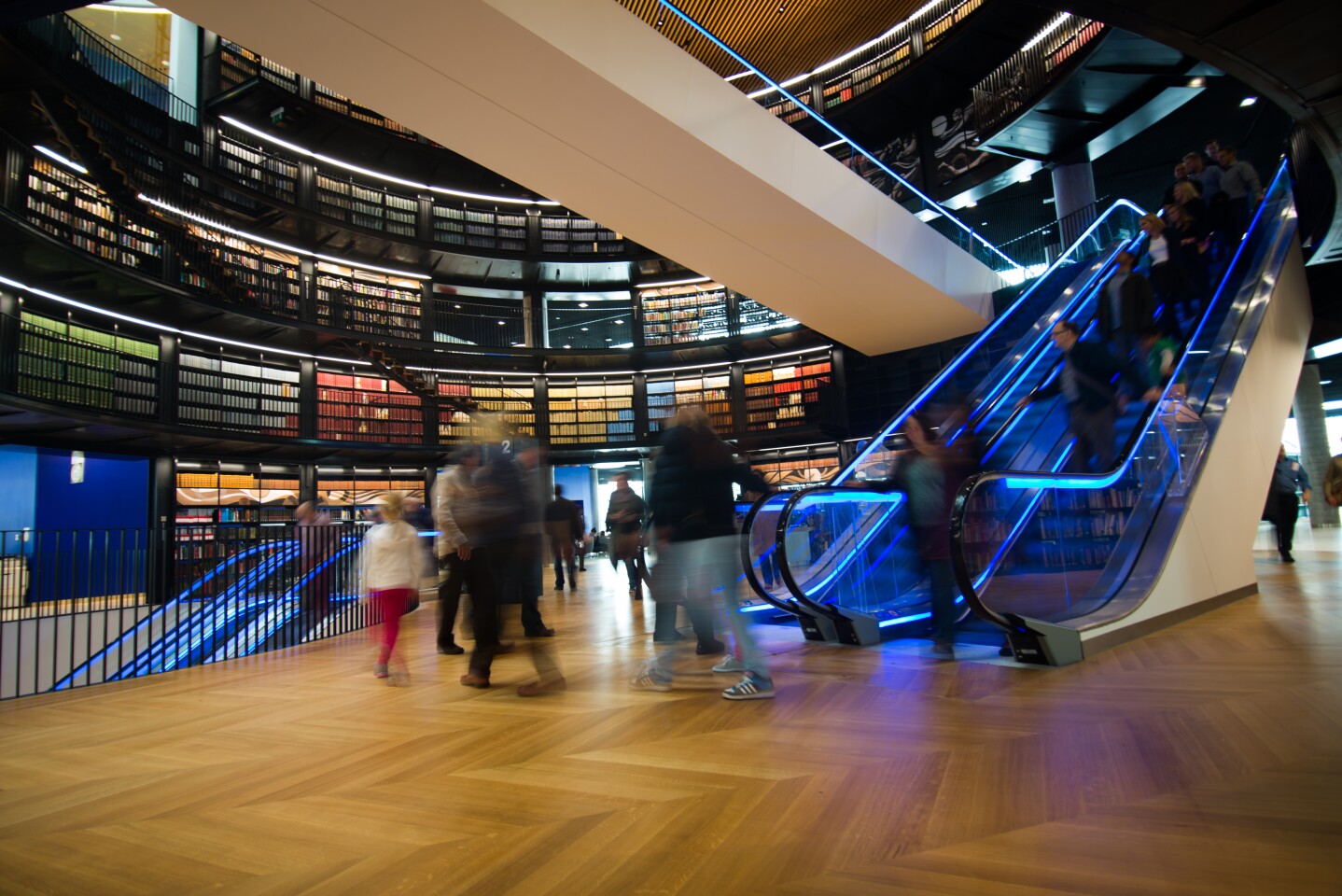
What they are: Ultra Broad angle lenses have a focal length of around less than 24 mm (in 35 mm-format), this means they can have in a wider scene than is typical, though they're not simply nearly getting all of a bailiwick into a shot. Rectilinear ultra wides help continue directly lines, just that, while fisheyes will reproduce buildings with curved walls.
Image characteristics: Because of the broad field of view, shots with ultra broad angle lenses typically feature a large depth of field. Images tend to pull in subjects that are close, and push abroad more distant ones making them appear farther apart. Perspective baloney of ultra wides can requite falling-building-syndrome (where vertical lines converge) but this can exist corrected in mail service-processing, or minimized with good technique.
What they are used for: While oft seen every bit a specialist lens, ultra wide angles can be used in a number of ways. Typical uses include landscape, architecture and interior photography. Even the distortion tin be used creatively, especially when using fisheye lenses.
Wide Angle

What they are: Typically covering a focal length between 24 mm and 35 mm, Wide Angle lenses are available equally primes or zooms and come up with either variable or stock-still maximum aperture. Offering a wide field of view, they often besides boast close minimum focusing distances.
Epitome characteristics: Broad angle photographs tin magnify the perceived distance between subjects in the foreground and background. Broad angles suffer less baloney than their ultra wide counterparts, just you withal get an exaggeration of lines and curves which tin can exist used artistically.
What they are used for: Many people only attain for a wide angle lens when trying to become the whole of a subject area in frame, whether that's a building, a large grouping of people or a mural. However, while those are perfectly skilful uses of one, they can too exist used for interesting portraits where y'all desire to identify a subject in a situation. Merely exist careful not to distort faces unflatteringly by shooting too close.
Standard / Normal

What the are: The kit lens your DSLR or interchangeable lens mirrorless camera came with is probably an example of a standard zoom lens, covering a focal range of effectually 35-lxx mm. Ones with meliorate optics and faster maximum apertures are also available. Many photographers consider a 50 mm prime number (in 35-mm-format) as a normal lens, as information technology's said to reproduce an image with a angle of view which feels "natural" and similar to what you run across with your optics - even thought this isn't technically truthful.
Image characteristics: Standard zoom lenses and normal primes sit betwixt wide angles and telephotos in terms of paradigm characteristics and are much more like you lot encounter with the man eye. Normal prime lenses tend to take faster maximum apertures which can allow for a shallow depth of field and lower light shooting.
What they are used for: As their proper name would propose, normal or standard lenses are versatile lenses which can be used for nigh all sorts of photography whether street, documentary, mural, or portrait. Considering normal prime number lenses tend to characteristic faster maximum apertures, they permit yous to shoot with a shallower depth of field and in lower light.
Telephoto
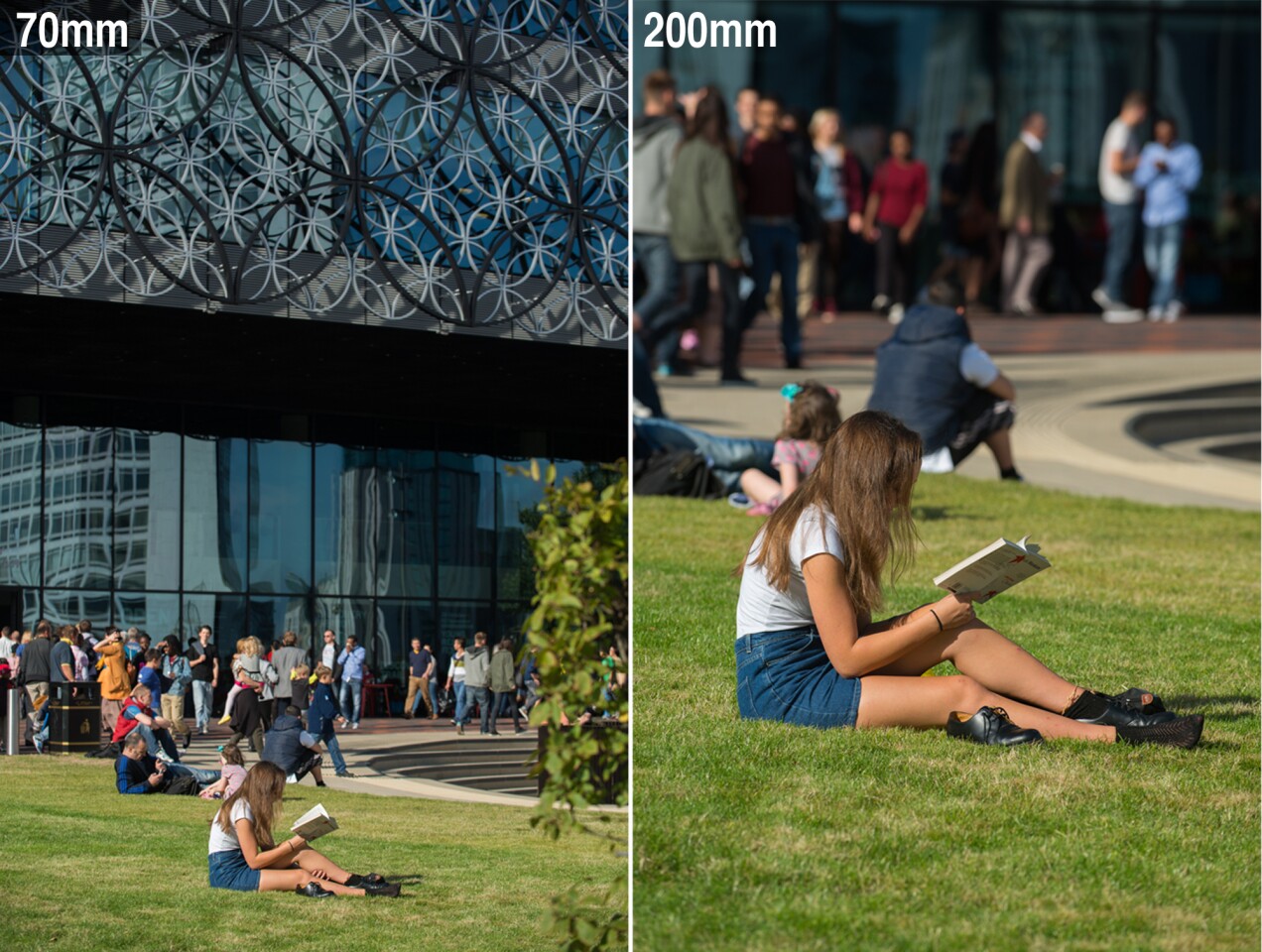
What they are: Telephoto lenses are those with a focal length in backlog of 70 mm, though many people would argue that "true" telephoto lenses are ones which exceed 135 mm. They focus on a much narrower field of view than other lenses, which means they are skillful for focusing in on specific details or afar subjects. They are by and large larger and heavier than equally specified wider lenses.
Image characteristics: Considering they take a narrower angle of view, telephoto lenses bring far away subjects closer. They can also take the effect of compressing the sense of distance in a scene and making objects appear closer together. A narrow depth of field means that a field of study tin be in focus with a blurred background and foreground.
What they are used for: In improver to beingness used to photo subjects you can't (or don't want to) get close to - like sports or wild animals - telephoto lenses can exist used for shooting portraits and even landscapes where their normalization of relative size can be used to give a sense of calibration.
Superzoom
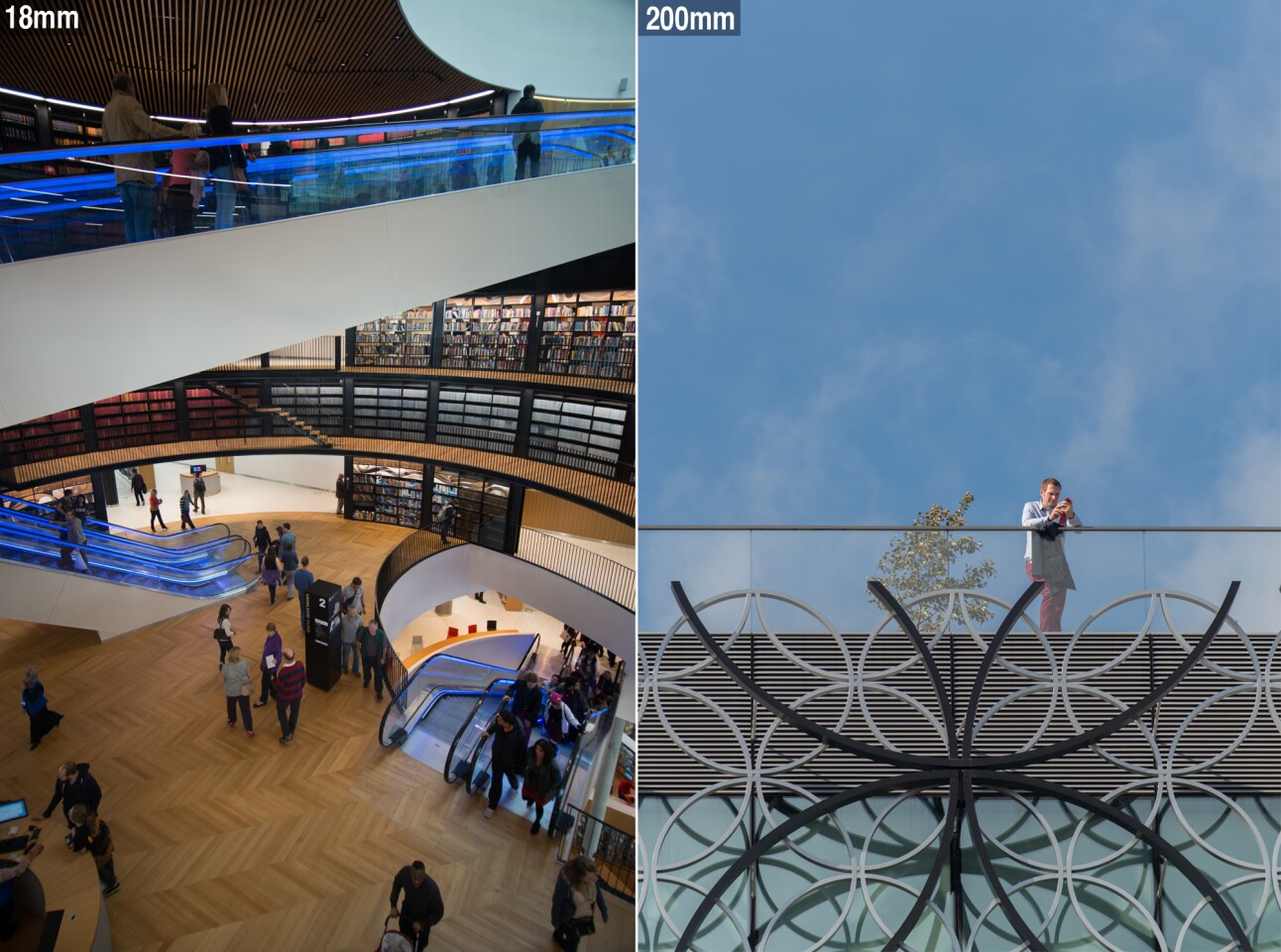
What they are: Superzooms are do-information technology-all lenses which cover focal lengths from wide to telephoto. They can be good for uses in situations where you can't or don't desire to be irresolute lenses and they normally modify in length equally yous zoom.
Image characteristics: Because compromises have had to be fabricated producing a do-it-all lens, superzooms do not have the same paradigm quality of more than dedicated lenses and often have slower and variable maximum apertures.
What they are used for: Offering a i-lens package, superzooms come into their own if you can't (or don't want to) change lenses. This could be when in situations where it wouldn't be prophylactic to switch lenses, or when travelling - you don't necessarily want to exist weighed downward past v lenses when on holiday with the family.
Macro
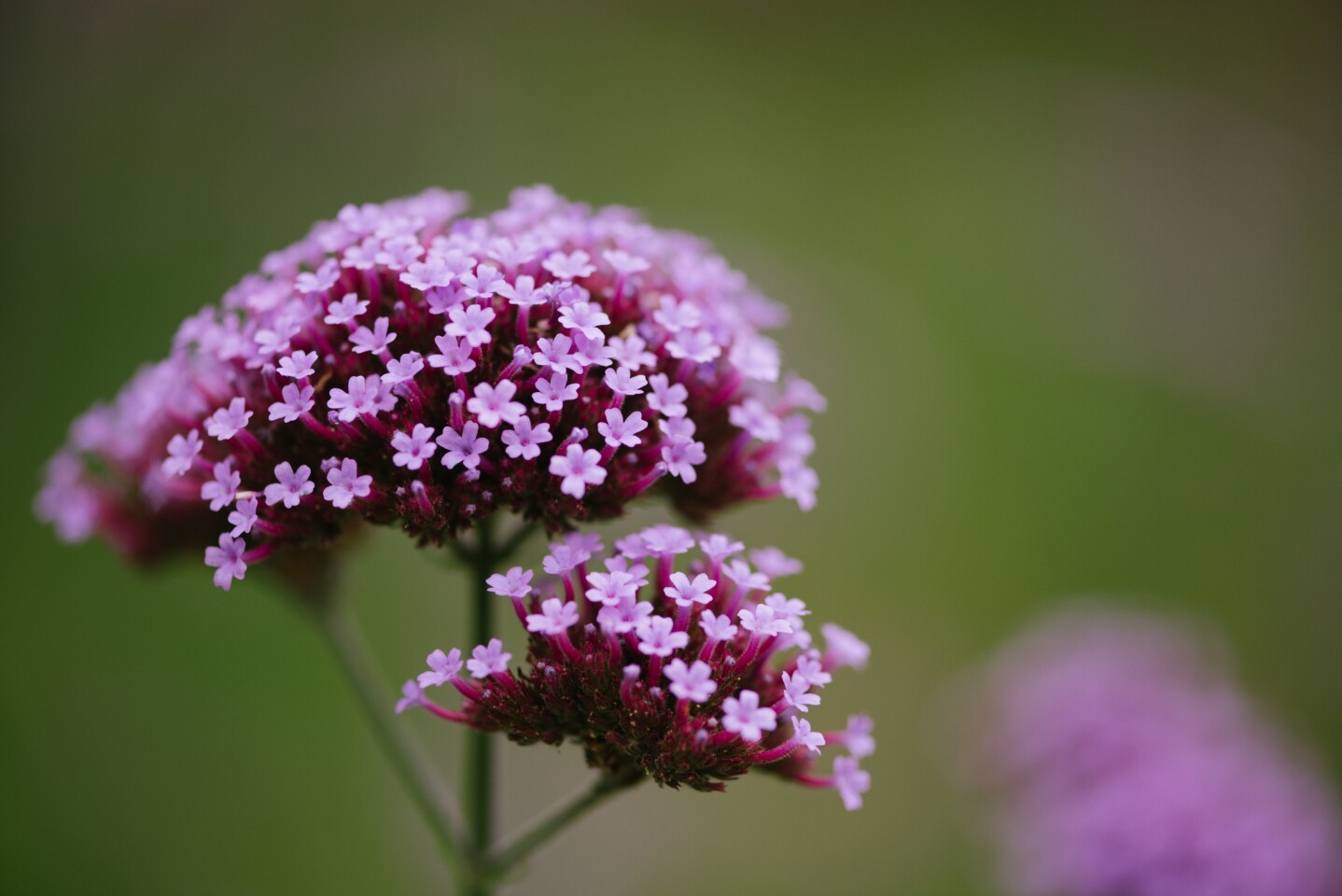
What they are: Ane of the more specialist lenses, marco lenses are technically those which are capable of reproduction ratios greater than one:ane. All the same, the term is frequently used to refer to any lens which can exist used for extreme shut-up photography. Macro lenses typically have focal lengths somewhere between xl-200 mm.
Image characteristics: Macro lenses normally have first-class image sharpness, though it'south worth noting that when working at shut distances they also have a tiny depth of field. You can ofttimes cease upwardly with a shot of an insect where only a fraction of information technology is in focus.
What they are used for: Though normally used for close-upwards photography (at which they excel), macro lenses can also exist great for portraits thank you to their typical sharpness and focal lengths.
Other things to consider
Size, weight … and toll

With changes in focal length and maximum discontinuity come up another set of lens changes, namely size, weight and cost. Ideally nosotros'd all be wielding a 16-600 mm F1.8 lens. Unfortunately, not only does physics dictate that such a lens would need to be huge and very heavy, information technology would also price a fortune to produce, if information technology was even possible.
As such, any lens is going to brand compromises to fit into a package of a size and weight which suits its users. Extreme focal lengths and larger apertures mean bigger and heavier lenses, which along with the bigger cost-tags is why they are typically used past professionals who can justify purchasing them.
Paradigm stabilization, build quality and video
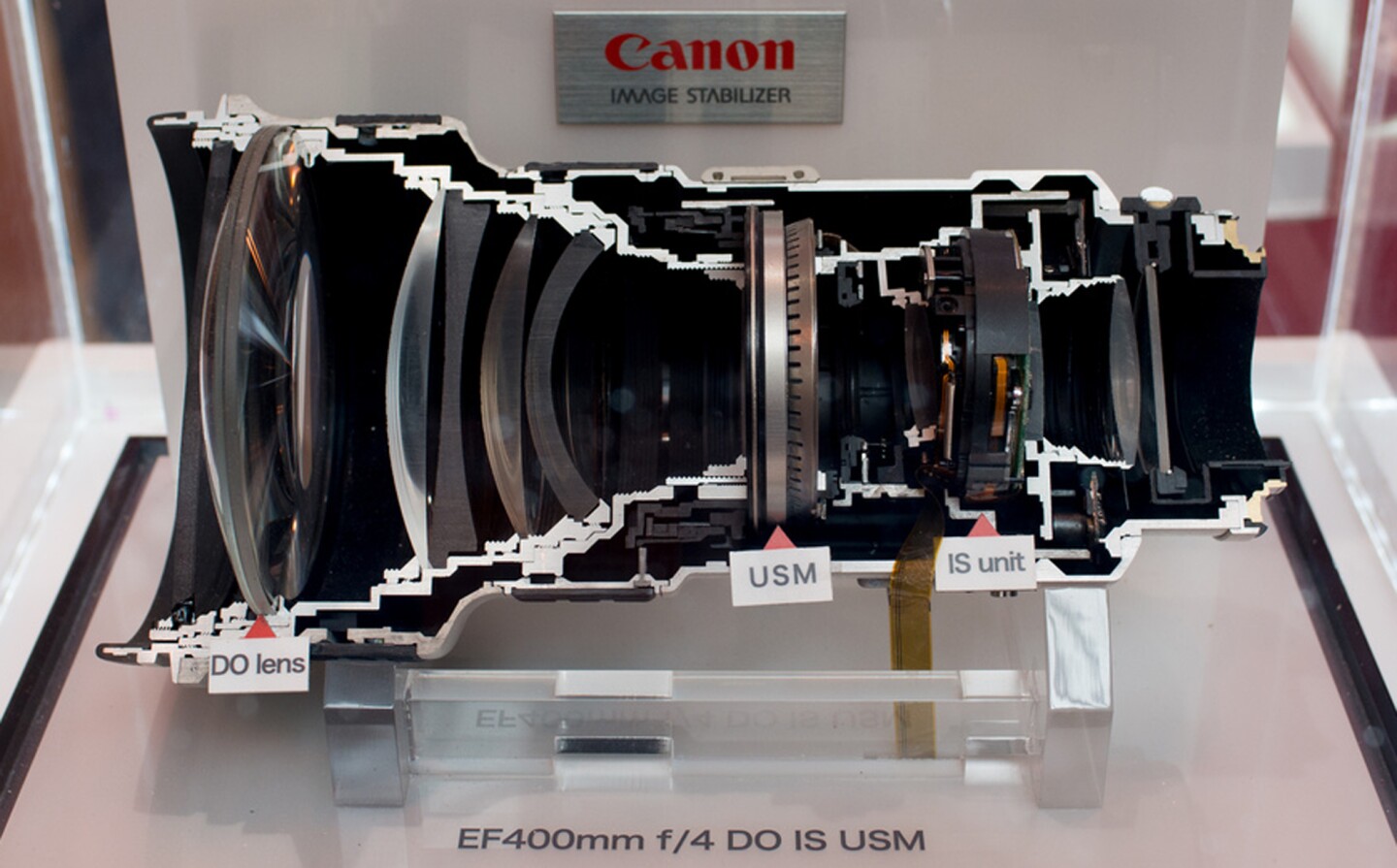
At that place are a number of other features which y'all may want think about, regarding your side by side lens. Image stabilization allows for use of slower shutter speeds without suffering camera milkshake (though some brands incorporate this into photographic camera bodies rather than the lens). Stabilization is as well very handy if y'all're shooting lots of video, in which case you might also want to think nearly lenses with power zooms which tin can zoom at adjustable speeds.
Weather-sealing ways you can use your lens (bold your camera is equally atmospheric condition-sealed) in extreme weather weather condition and usually besides ways a higher level of build quality.
Other considerations include the use of special lens elements and coatings which can improve sharpness and reduce image problems such as chromatic aberration. It'due south also worth thinking about whether y'all would benefit from a higher number of aperture blades which can requite a more than pleasing bokeh, and if you need lenses with internal focus motors, or indeed simply transmission focus.
Third party manufacturers
While the majority of photographers buy lenses from the same firm every bit their photographic camera, at that place are a number of tertiary party manufacturers such as Sigma, Tamron and Tokina which produce lenses for DSLRs and mirrorless interchangeable lens cameras. Traditionally seen every bit a less desirable option, some of the newer third political party lenses are as practiced if not improve than their Canon/Nikon/Sony counterparts. They are often also considerably cheaper.
Examples of what lens to buy
Beneath are a number of typical situations that kit-lens-toting photographers often observe themselves in. For each example, we've highlighted some of the factors that should be considered when trying to notice the right lens for the task. While these are factors which are relevant whatever photographic camera and lens system you're using, in each case we've also highlighted a couple of lenses that would be a good option for specific ready-ups without blowing the budget.
I want an all-mean solar day / travel lens

When yous're on holiday or traveling, you probably don't want to be lugging several lenses and cameras around with you – unless y'all're the about dedicated of photographers, that is. It'south oftentimes the same if you're trying to enjoy a day with the family unit and don't want to spend all day changing lenses and moaning about your back.
As such, a expert all-day or travel lens would be one that was piece of cake plenty to acquit around, but notwithstanding offered you the freedom to capture shots from landscapes to portraits, and zoom in on distant objects. For Micro Four Thirds shooters, that could be something like the Panasonic Lumix G Vario 14-140 mm f/3.5-five.6, or the AF-S DX NIKKOR 18-200 mm f/3.five-5.6G ED VR 2 if a DX Nikon is your DSLR or choice.
I want to do street photography

Street photography can be washed with virtually any lens, though a 300 mm F2.eight might raise a few eyebrows from your subjects. However, a focal range of around 35-fifty mm is oftentimes seen as the platonic for capturing the moment in urban areas.
Unless you want all of your subjects looking directly at the camera, you'd probably be best served past something discrete. It's also of import that street photography lenses feature a fast maximum aperture for lower-calorie-free situations. This means that something like the Fuji XF 23 mm f1.4 R Lens would be a great selection. The Sigma 35 mm F1.4 DG HSM has as well been very well received by many DSLR street shooters.
I struggle to photograph my kids running around in the garden

Many people crush out for a DSLR or mirrorless interchangeable lens photographic camera when they have a child, but by the time that kid starts running around, the kit lens struggles to keep up, both in terms of aperture and focal range. This is especially true if y'all're trying to photo the kids running around in the garden or on the sports field.
This means y'all need something with a fleck more reach, but probably without the bulk and weight that a professional lens would bring. A zoom lens volition allow you lot to keep your shots framed as you want while your field of study moves around in front of y'all. So, if you feel you simply need some added reach, the EF-S 55-250 mm f/4-5.six IS Ii could get you closer to the activeness. Merely if you lot desire a bit more speed (and to be the best equipped parent at the game), in that location'due south the Canon EF seventy-200 mm f/4L USM.
I desire to take landscape photographs
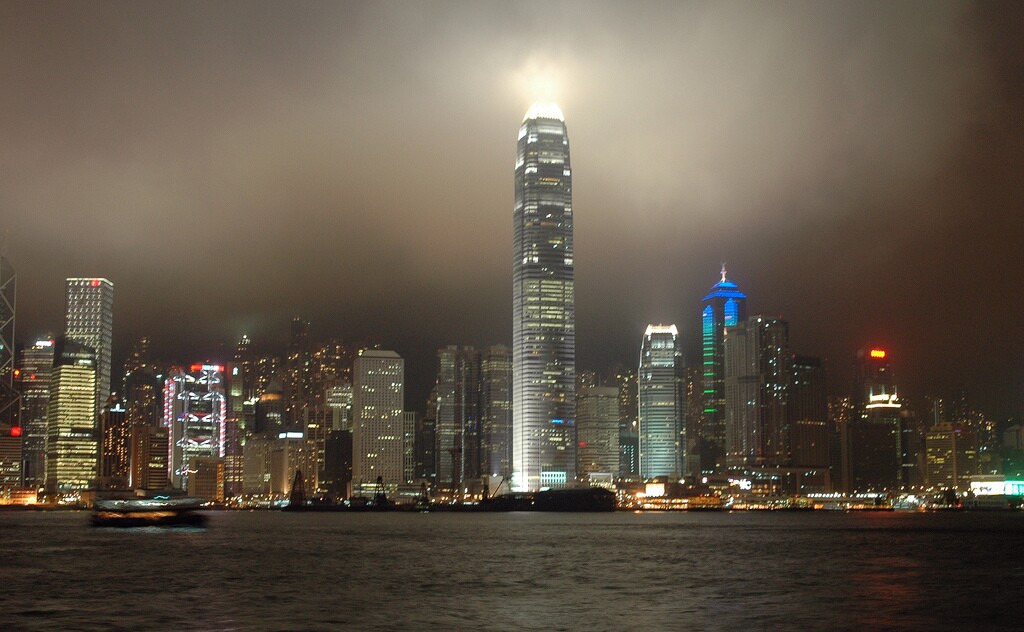
While the kit lenses which come with most cameras are surprisingly good at the wide angle end, you could discover that they don't quite get in enough for some of the landscape images you try to take. Then, unless y'all're able to keep moving backwards, you're going to need a new lens.
Focal length is fundamental hither, and yous'll only get some landscapes if yous've got an ultra wide angle lens. You could go for either a prime or a zoom, but most people in this situation are probably going to be best-served by a zoom. A lens like the AF-S DX NIKKOR ten-24 mm f/3.five-4.5G ED could be practiced for APS-C Nikon shooters, while the Olympus 9-18 mm f/iv-5.vi ZUIKO would do the job on Micro Four Thirds cameras.
I want a lens which volition make me ameliorate every bit a photographer

After a while you might observe that y'all've simply outgrown your kit lens. You suddenly find that it's stifling your creative ambitions and preventing you from taking the photos that yous desire, even if they are within its focal length reach.
This is the ideal time to get yourself a fast prime lens, and the good news is that you don't take to spend a fortune to exercise it. Getting something similar a Nikon AF-S DX NIKKOR 35 mm f/one.8G or the Sony E 50 mm f/1.eight OSS will mean you lot can play around with shallower depths of field, and shoot naturally in conditions that would have otherwise required a flash. Because they are primes, it also means you need to zoom with your anxiety, which will in turn probably mean you spend more time thinking virtually how you compose shots. Never a bad thing.
Summary
As we've seen, different lenses can give photographers the creative liberty to take all sorts of images. It's no understatement to say they are every bit important, if not more so, than the camera you're using. This is why it'southward such a shame to encounter photographers buy cameras with the ability to change lenses so never do so.
It's worth remembering that lenses tin can often concluding longer than your camera, because they will go along to work on the side by side generation of cameras, and the one after that, probably. This is why many photographers are willing to spend more on an private lens than their camera.
Still, buying new lenses doesn't have to mean spending a fortune. We've seen how relatively cheap primes like the peachy-fifty (50 mm F1.8) can alter your photography forever. There are also thousands of second-hand lenses which will work just also as new ones out there – peculiarly for DSLR shooters, where yous can ofttimes utilise a 20-year-one-time lens. You never know, your male parent might fifty-fifty accept some lying around in the cranium.
Hopefully this article hasn't fabricated you experience compelled to buy more than and more lenses, equally that actually wasn't the aim. If you lot're not certain if you need a new lens, you probably don't. Instead, nosotros hope this has helped you empathize what to await for when y'all feel that your electric current lenses are preventing y'all from being the photographer you want to be.
Source: https://newatlas.com/camera-lens-buying-guide/29141/
Posted by: petersacal1959.blogspot.com


0 Response to "What Does In Camera Mean"
Post a Comment